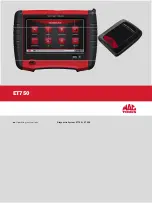
10
fig. 2.4.c
2.4.1 Mast is not stepped
2.4.2 Mast is stepped using a forestay
attached to the final forestay chainplate
1. Establish the forestay angle. Use an accurate
drawing, which shows details of the area of the
deckwhere the Furlex will be attached (see fig.
2.4.c).
2. Transfer this angle to a cardboard jig.
3. Press the jig against the underside of the deck
and move it longitudinally until the edge rep-
resenting the forestay line intersects the hole in
the forestay fitting in the anchor well. Mark the
intersection point on the underside of the deck
and drill a 6.5 mm hole through the deck.
1. Make a jig which represents the forestay angle (FA)
above deck (See fig. 2.4c)
2. Using this jig, mark the angle CSA between the
forestay fitting in the anchor well and the forestay
intersection point
3. If these angles are equal, the existing forestay fit-
ting is correctly located. If the angles are not equal
the forestay angle FA must be used also below
deck to decide the intersection point. Press the jig
against the underside of the deck and move it lon-
gitudinally until the edge representing the forestay
line intersects the hole in the forestay fitting in the
anchor well. Mark the intersection point in the for-
and aft direction accurately on the underside of the
deck.
9. Remove the forestay. The recommended prodedure
is to firstly slacken the backstay. Pull the mast-
head forward using the genoa halyard. Secure the
halyard using a “D”- shackle or tie to a strong deck
fitting. For safety reasons do not use the halyard
snap shackle. NOTE. If the forestay is to be used
to decide the forestay length FLD (se page 13), the
setting of any rigging screw must not be changed
10. Measure the distance CH (see page 13) of the
chainplate and enter the measurement in the table
at page 11.
11. Remove the forestay fitting from the deck.
12. Mark the intersection point on the underside of
the deck by drawing a line along the longitudinal
centreline of the boat and using earlier marking as
per item 3.
13. Drill a 6.5 mm hole at the intersection point.
For further fitting work see item 3.1
Always use a strong ”D” shackle or tie the halyard!











































